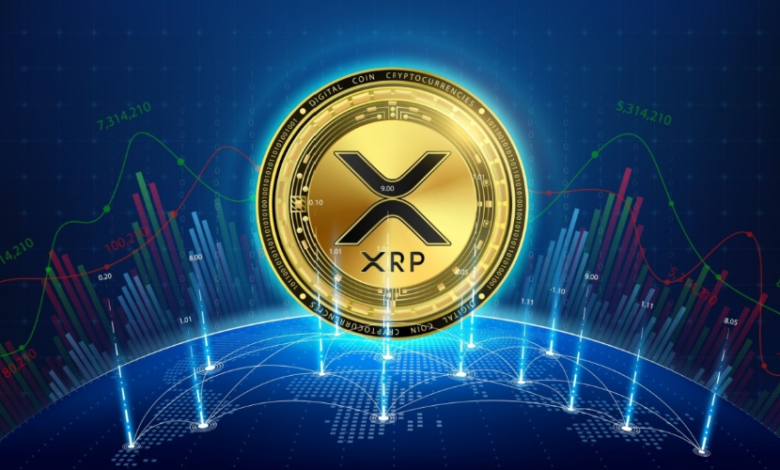What Makes XRP Price So Unpredictable? Key Insights

XRP, a cryptocurrency created by Ripple Labs, has emerged as one of the most widely used digital assets in the financial world. While XRP has gained substantial traction in cross-border payments and remittances, its price remains highly unpredictable, often fluctuating wildly despite its utility. In this article, we’ll explore the key factors that contribute to the unpredictable nature of XRP price and the challenges involved in forecasting its future movement.
1. Regulatory Uncertainty
One of the most significant factors contributing to the volatility of XRP price is regulatory uncertainty. Unlike Bitcoin and Ethereum, which have clearer regulatory frameworks in some jurisdictions, XRP has been caught in legal battles that have had a direct impact on its market value. The most prominent example is the ongoing lawsuit between Ripple Labs and the U.S. Securities and Exchange Commission (SEC). The SEC argues that XRP is a security, which could impose strict regulations on its trading and usage, while Ripple maintains that XRP is not a security.
The outcome of this lawsuit could set a precedent for how XRP is treated under U.S. law and influence its price dramatically. If Ripple wins, XRP could gain more legitimacy and stability, but if the SEC prevails, it could face severe restrictions, leading to a sharp decline in its value. Thus, the uncertainty surrounding this legal battle contributes to the unpredictable nature of XRP price.
2. Market Sentiment and Speculation
Cryptocurrency markets are notoriously driven by sentiment and speculative trading. XRP price is no exception. Investors often make decisions based on news, rumors, and market trends rather than fundamental factors. Positive news about Ripple’s partnerships, adoption of XRP in cross-border payments, or favorable regulatory rulings can lead to price spikes, while negative news about legal issues or market competition can cause sharp declines.
The speculative nature of the market means that XRP price is often influenced by broader market trends, such as Bitcoin’s price movement or shifts in investor sentiment about cryptocurrencies in general. As such, XRP price can experience significant swings, even without any fundamental change in its utility or technology.
3. Ripple’s Market Control
Unlike decentralized cryptocurrencies like Bitcoin and Ethereum, Ripple Labs holds a significant portion of the total supply of XRP. This centralized distribution of tokens can lead to unpredictable price fluctuations. Ripple Labs has a large reserve of XRP that it periodically releases into circulation, which can impact the total supply and influence the price.
If Ripple decides to sell a large amount of XRP from its reserve, it could flood the market, causing the price to fall. Conversely, if Ripple restricts the release of XRP, it could create a supply shortage that drives the price up. This centralized control over supply creates a level of unpredictability not seen in more decentralized cryptocurrencies, making XRP price harder to predict.
4. Adoption and Use Cases
The adoption of XRP for real-world use cases is a crucial factor influencing its price, but the level of adoption is still evolving. Ripple’s goal is to make XRP the go-to digital asset for cross-border payments, offering a faster, cheaper, and more efficient alternative to traditional banking systems. However, while Ripple has secured significant partnerships with financial institutions like Santander, PNC, and American Express, the broader adoption of XRP is still a work in progress.
The unpredictable nature of XRP price is partly due to the uncertainty around whether XRP will achieve widespread adoption in the payments industry. If more banks and financial institutions begin to use XRP for remittances, its price could rise as demand for the token increases. On the other hand, if XRP faces stiff competition from other blockchain projects or lacks adoption, its price could stagnate or decline.
5. Macro-Economic Factors
Like all cryptocurrencies, XRP price is also subject to broader macroeconomic factors. Changes in interest rates, inflation, and global financial markets can influence investor behavior and the demand for digital assets. For example, if traditional financial markets face a downturn, investors may turn to digital assets like XRP as a hedge against traditional market risks.
Conversely, if the global economy stabilizes, or if central banks begin to issue their own digital currencies, XRP may face competition and see its value decline. These macroeconomic factors, combined with the speculative nature of crypto markets, contribute to the volatility and unpredictability of XRP price.
6. Competition from Other Cryptocurrencies
XRP’s primary use case is in cross-border payments, but it faces fierce competition from other cryptocurrencies, especially stablecoins and blockchain networks focused on remittances and financial services. Stablecoins like USDT (Tether) and USDC (USD Coin) offer the benefits of price stability, making them an attractive alternative to volatile cryptocurrencies like XRP for financial institutions.
Furthermore, other blockchain projects like Stellar (XLM) and SWIFT GPI are also vying for a share of the cross-border payments market. The competition from these projects introduces an element of unpredictability to XRP price. If a competitor gains traction or develops superior technology, XRP could lose market share, driving its price down.
7. Liquidity and Market Depth
XRP’s price can also be influenced by liquidity and market depth. Unlike Bitcoin, which enjoys deep liquidity across numerous exchanges, XRP’s liquidity can be more concentrated on specific platforms. This limited market depth can lead to significant price swings, particularly when large trades are executed.
When large institutions or traders make significant purchases or sales of XRP, the price can experience sharp movements. This liquidity issue can make XRP price more volatile and harder to predict, especially during periods of low trading volume or when large holders decide to offload their positions.
Conclusion
XRP price is one of the most unpredictable in the cryptocurrency market due to a combination of factors, including regulatory uncertainty, market sentiment, Ripple’s centralized control over supply, adoption levels, macroeconomic influences, competition, and liquidity issues. These elements create an environment where XRP price can fluctuate dramatically based on both external events and internal dynamics.
For investors and traders, understanding the key factors that influence XRP price is crucial to making informed decisions. While predicting the future of XRP remains challenging, staying abreast of regulatory developments, adoption news, and market trends can help provide some insight into the potential direction of this volatile digital asset.





